Forget takeaways, nothing could beat this meltingly tender Spicy Beef Rendang! Each piece is caramelized on the outside, tender on the inside, and permeated with layer upon layer of creamy, spicy flavours.
I’ve been making this recipe for many years now and it’s a winner every time. The long slow cooking, and the changes that occur during that cooking process truly makes this dish feel like it’s been cooked with care and devotion.
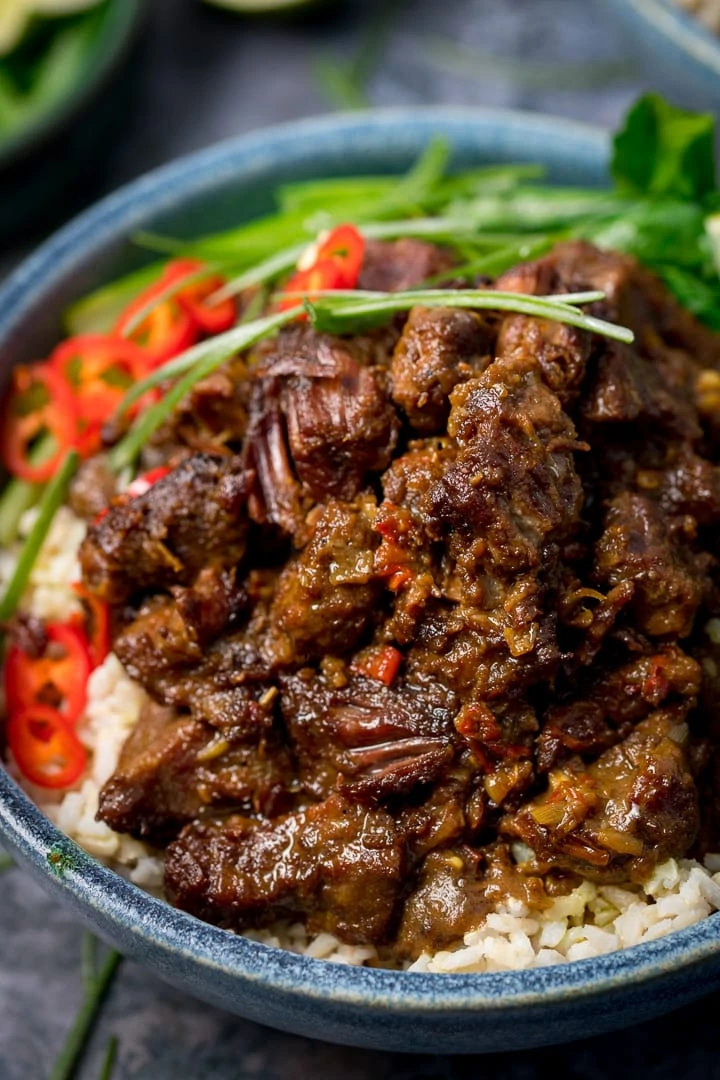
This is a slow-cooked dish, that requires the occasional bit of attention during its 4 hours in the oven. It’s one that’s worth saving for the weekend to ensure a result that is totally worth the wait.
What is Rendang?
Rendang originates from Indonesia, and is now a popular dish all over the world, due to it’s amazing and complex flavours. There are many different recipes out there, but most (including me!) agree that it’s a slow-cooked dry curry, made with coconut milk, spices and sugar.
The uniqueness of rendang, compared to any other slow-cooked beef curry, is that during the cooking process, the coconut milk reduces, and the oil separates from the coconut milk. This means that the beef is initially slow-cooked to tenderness in that creamy-spicy sauce, and then as the oil separates, it fries the beef, giving it a beautiful, caramelized exterior.
What do we need to make it?
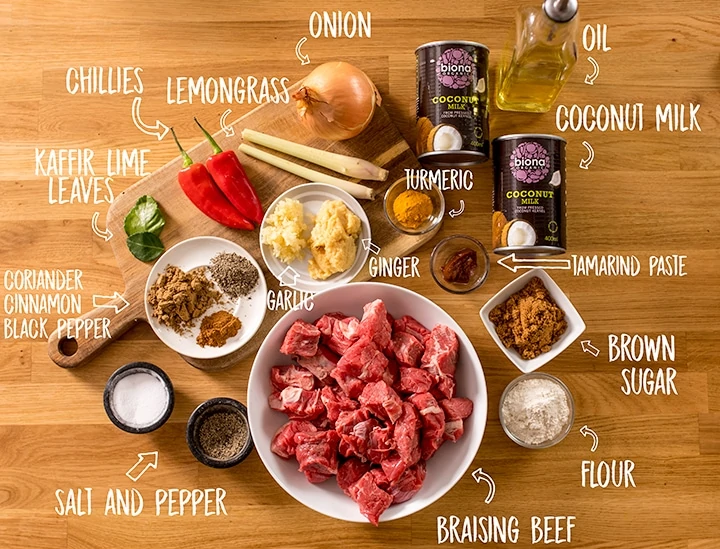
Best cut of beef to use:
Chuck steak (also known as braising steak) – comes from the forequarter of the cow. This consists of parts of the neck, shoulder blade, and upper arm. It’s a tough but very flavorful cut of meat that needs long slow cooking. This makes it perfect for beef rendang. Cut the beef into large (3cm-4cm) chunks.
How do we make it?
- Dust chunks of beef with flour, salt and pepper, then seal the beef in hot oil in a large cast-iron casserole pan. Transfer the beef to a bowl.
- Soften a chopped onion in the same pan with a little oil (scrape up any crispy bits as you go), then add garlic, ginger and turmeric, lemongrass, chillies, tamarind paste, ground coriander, pepper, cinnamon, lime leaves, sugar and salt.
- After cooking for a minute or so, add in coconut milk. Stir and bring to the boil, then add the beef back in.
- Place a lid on the pan and place in the oven at 150C/300F for 90 minutes.
- After 90 minutes, stir, then continue to cook in the oven, uncovered for another 2-2.5 hours, stirring very gently every half an hour.
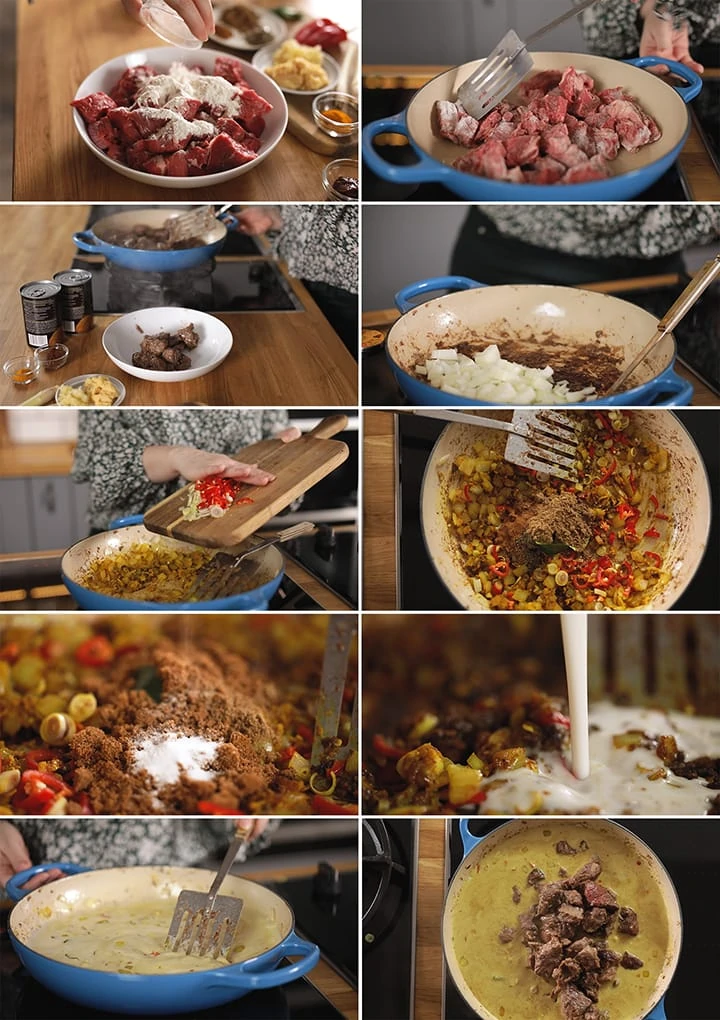
When you put the rendang in the oven, you’ll wonder how it’s going to end up being a dry-ish curry. The recipe starts off with a lot of liquid from the coconut milk. However, during the cooking process, that coconut milk reduces right down.
After about 3 hours, the oil separates from the rest of the sauce (you’ll be amazed at how much of it there actually is).
As you take it out of the oven for an occasional stir, you’ll probably wonder if it’s all going to go horribly wrong. Trust me, it’s supposed to look like that.
Here’s how mine looks during the cooking process:
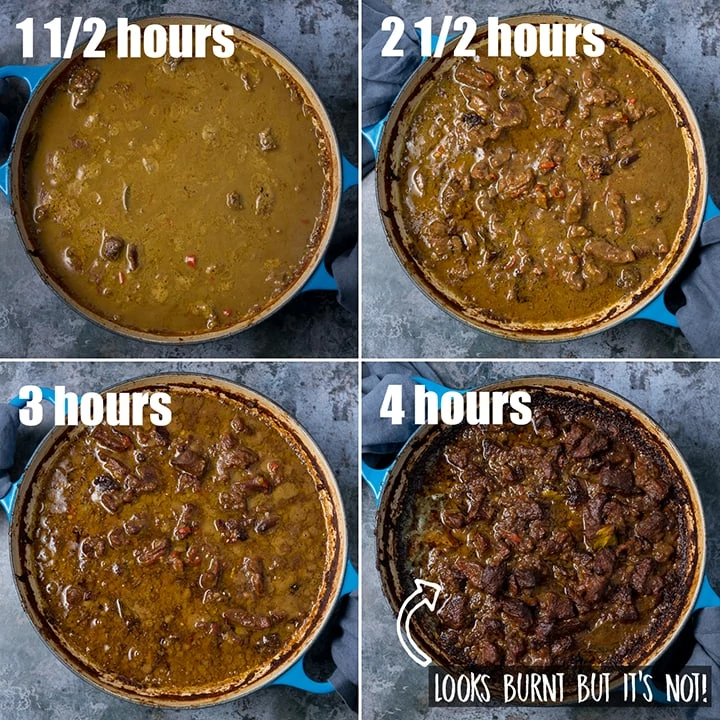
As more and more oil separates, and the rest of the sauce starts to disappear, that remaining oil will actually be crisping and frying the meat. So you’ll be left with very dark, caramelized meat that has been infused with bags of flavour.
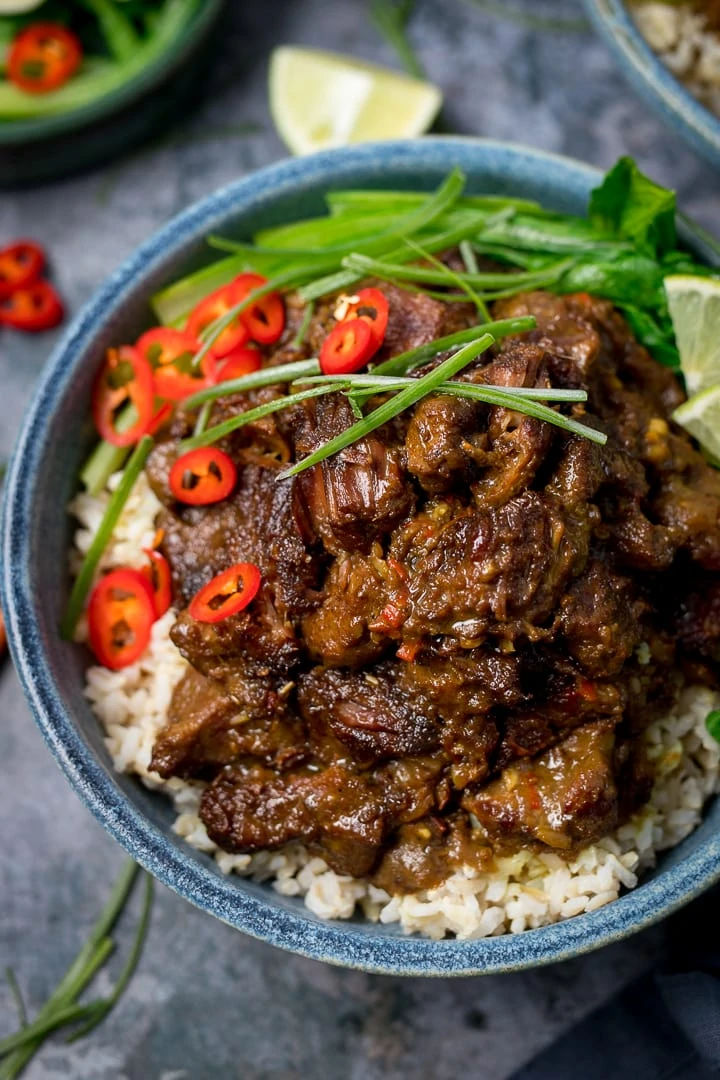
Pro Tip: It’s very important to keep a close eye on things during the last 30 mins or so – to ensure the meat doesn’t stick to the pan or burn. And don’t worry, any remaining oil can be poured off and discarded.
Like your rendang a little saucier?
Simply reduce the cooking time by 30-60 minutes, and be sure to drain that excess oil off.
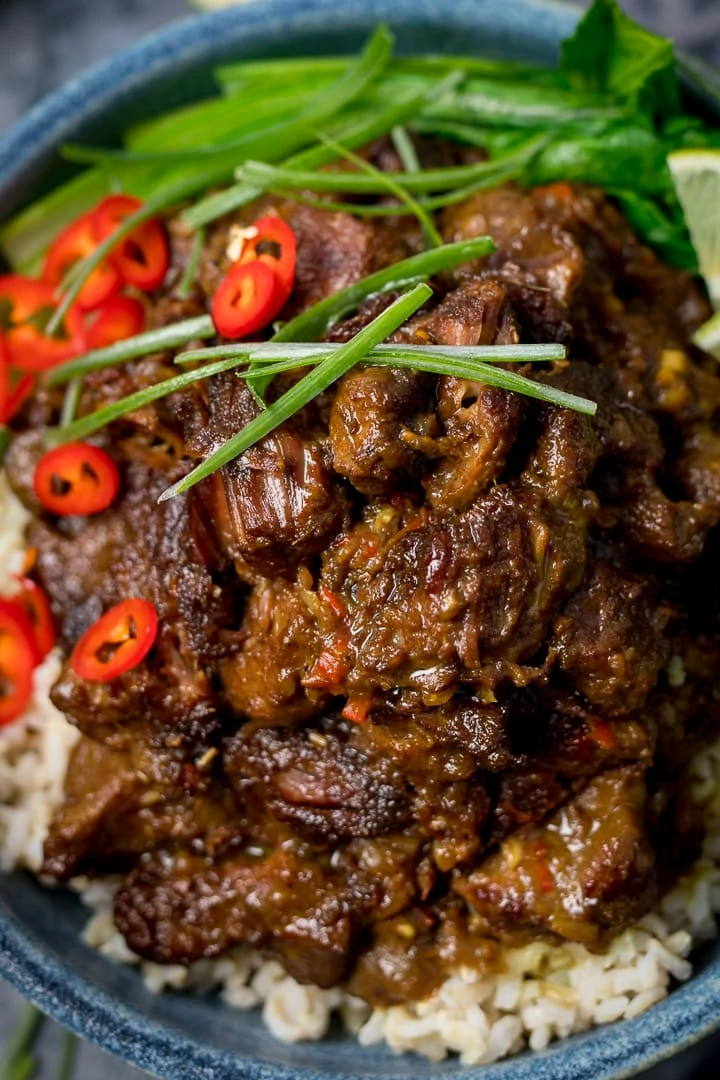
What to serve with Beef Rendang?
- Indonesian Fried Rice
- Egg Fried Rice – this is more of a Chinese-style fried rice, but I still think it goes well
- Homemade Riata
- If you prefer plainer rice, you could go with Boiled Rice or
- Pilau Rice
- Or how about some Homemade Chapatis or even Garlic Naan Bread?
The Video

More Asian Recipes:
Love this type of cuisine? Here are some more Indonesian, Malaysian or Singapore-style recipes:
- Mee Goreng with chicken (spicy yellow noodles)
- Mee Siam with prawns (vermicelli noodle dish)
- Vegetarian Kway Teow (fried flat noodles)
- Seafood Laksa (spicy slurpy vermicelli noodle soup)
- Chicken Satay with easy satay sauce. Oh and there’s my Beef Satay Skewers too.
- Beef Massaman Curry Recipe
If you’ve tried my Beef Rendang recipe then please rate the recipe and let me know how you got on in the comments below, I love hearing your thoughts and add-ons to my recipes!
You can also follow me on INSTAGRAM, FACEBOOK, PINTEREST, and TWITTER to see what I’m up to in the kitchen, what recipes I’m loving, and of course, YOUTUBE to see our latest recipe videos!
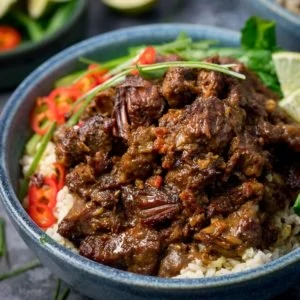
Beef Rendang
Ingredients
- 3 tbsp vegetable oil
- 2 tbsp plain (all-purpose) flour or cornflour (cornstarch)
- pinch salt and pepper
- 800 g (1.8 lbs) braising/stewing beef cut into large chunks (approx 3-4cm)
- 1 large brown onion peeled and chopped
- 5 cloves garlic peeled and minced
- 2 tbsp minced ginger
- 1 tsp turmeric
- 2 lemongrass stalks discard the outer leaves, and finely slice the lemongrass (you can replace this with 2 tsp of lemongrass paste)
- 2 red chillies chopped. I use hot red chillies as the heat cooks out during cooking.
- 1 tsp tamarind paste
- 1 tbsp ground coriander
- 1 tsp freshly ground black pepper
- ½ tsp cinnamon
- 2 kaffir lime leaves fresh or freeze dried
- 3 tbsp dark brown muscovado sugar
- ½ tsp salt
- 800 ml (28 oz) full-fat coconut milk (2 x 400ml/14oz cans)
To Serve (Optional):
- boiled rice
- or egg fried rice
- spring onions (scallions) sliced into thin strips
- fresh red chillies sliced
- green veg such as pak choi or spinach
Instructions
- Preheat the oven to 150C/300F (fan) and place a large cast iron casserole dish on the hob (stove top).
- Add 2 tbsp of the oil and heat on a high heat.3 tbsp vegetable oil
- Mix the flour with a pinch of salt and pepper, and coat the beef chunks with the flour.2 tbsp plain (all-purpose) flour, pinch salt and pepper, 800 g (1.8 lbs) braising/stewing beef
- Place the beef in the hot oil and brown (you may need to do this in two batches). Remove from the pan and place the sealed beef in a bowl.
- Add the remaining 1 tbsp of oil to the pan and then add in the onion. Turn down the heat and cook slowly for a couple of minutes whilst stirring (scrape up any crispy bits on the pan as you go).1 large brown onion
- Add in the garlic, ginger, and turmeric and cook for another couple of minutes whilst stirring. At this point, you may find that the base of the casserole dish is starting to get quite brown and the onions may be beginning to stick a little. If so, add a splash of cold water to prevent the pan from burning.5 cloves garlic, 2 tbsp minced ginger, 1 tsp turmeric
- Add in the lemongrass, chillies, tamarind paste, ground coriander, pepper, cinnamon, lime leaves, sugar, and salt. Mix together and allow to cook for a minute.2 lemongrass stalks, 2 red chillies, 1 tsp tamarind paste, 1 tbsp ground coriander, 1 tsp freshly ground black pepper, ½ tsp cinnamon, 2 kaffir lime leaves, 3 tbsp dark brown muscovado sugar, ½ tsp salt
- Add in the coconut milk and bring to a gentle bubble, stirring to ensure nothing is sticking to the base of the casserole dish.800 ml (28 oz) full-fat coconut milk
- Add the beef back in and stir. Place a lid on and put in the oven. Cook for 90 minutes – giving the curry a stir after 45 minutes.
- After 90 minutes, give everything a stir again and ensure nothing is sticking, then remove the lid and continue to cook in the oven, uncovered for another 2-2.5 hours. Stir very gently every half an hour (to ensure you don’t break up the beef chunks).
- Towards the last hour of cooking time, you’ll see that the sauce is going darker and the oil is separating and rising to the top.
- If you like a bit of sauce with your rendang then take your rendang out of the oven when there is a bit of oil on top, and is still quite saucy underneath.
- If you prefer your rendang drier, then leave it to cook for longer. Keep a close eye on it to ensure it doesn’t burn. Stir gently and often. Drain any remaining oil off before serving. Gently stir the rendang, and then serve with rice and sprinkled with strips of spring onion (scallions)boiled rice, or egg fried rice, spring onions (scallions), fresh red chillies, green veg such as pak choi or spinach
Video

Notes
Can I make it ahead?
Yes, make the rendang, then cool and cover. Reheat in the oven at 150c/350F for 30-35 minutes, or until piping hot throughout. Heat the rendang covered for the first 20 minutes, then uncovered for the final 10-15 minutes. You can add a splash of water if the rendang is looking particularly dry, but be careful when stirring it in, as the beef will be very tender, and may fall apart.Can I freeze it?
Yes, make the rendang, then cool, cover and freeze. Defrost in the refrigerator overnight, then reheat as per the ‘Can I make it ahead?‘ instructions above.Can I cook it in the slow cooker?
Cooking the recipe in the slow cooker will give you a nicely flavoured curry, BUT you won’t get the oil separating from the coconut milk, which means you won’t get the sauce reducing or the caramelization of the beef. If you did want to use the slow cooker and you want that dry-caramelized finish, you can make up the curry right up to the part you add the beef back in with the coconut milk. Bring to the boil, then transfer to the slow cooker.Cook on high for 4-5 hours or low for 6-8 hours. After this time, transfer to an ovenproof casserole pan and place in the oven, uncovered at 160C/320F for 1-1 1/2 hours, until the sauce reduces, the oil separates from the coconut milk and the beef caramelizes to a dark golden brown. Stir every 30 minutes during the time cooking in the oven. Nutritional info is per serving for the rendang only (not rice) – after the oil (approx 125ml/half a cup) has been drained off. If you don’t drain off the oil, add 180 cals per serving (720 cals extra for all of the rendang)
Nutrition
Nutrition information is automatically calculated, so should only be used as an approximation.
This recipe was first posted in 2014, then updated in January 2018 and again in June 2020. Updates were for new photos, tips, and recipe video (no updates to the recipe, just added a couple of ingredient swap options).
Some of the links in this post may be affiliate links – which means if you buy the product I get a small commission (at no extra cost to you). If you do buy, then thank you! That’s what helps us to keep Kitchen Sanctuary running. The nutritional information provided is approximate and can vary depending on several factors. For more information please see our Terms & Conditions.
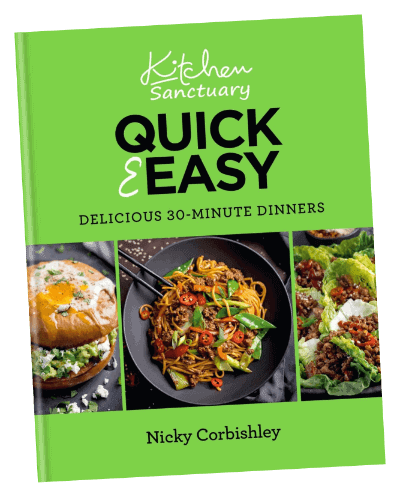
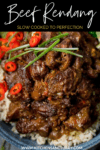
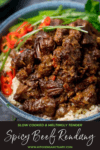

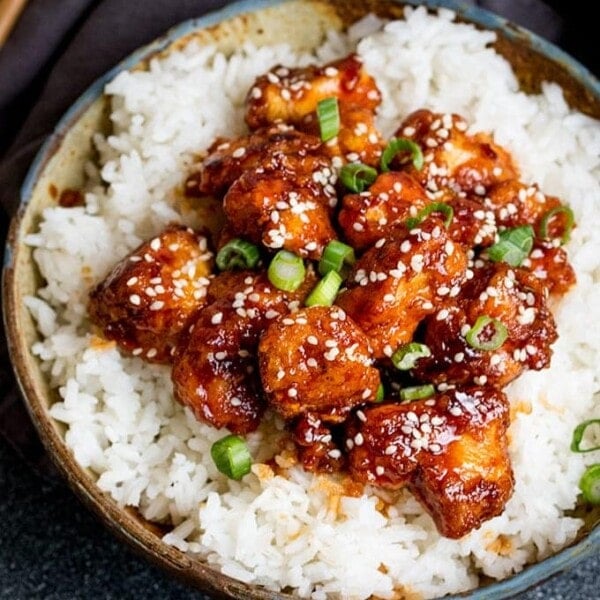
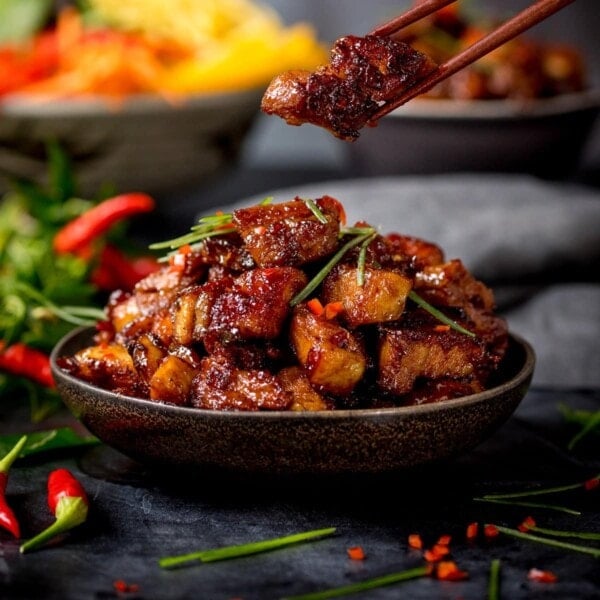
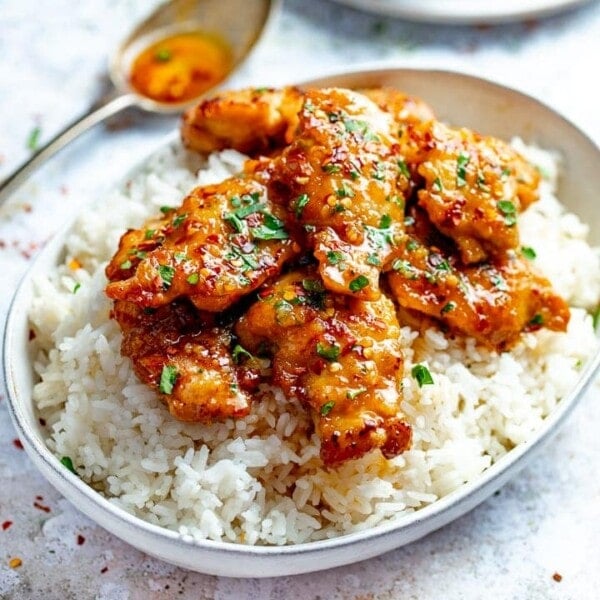

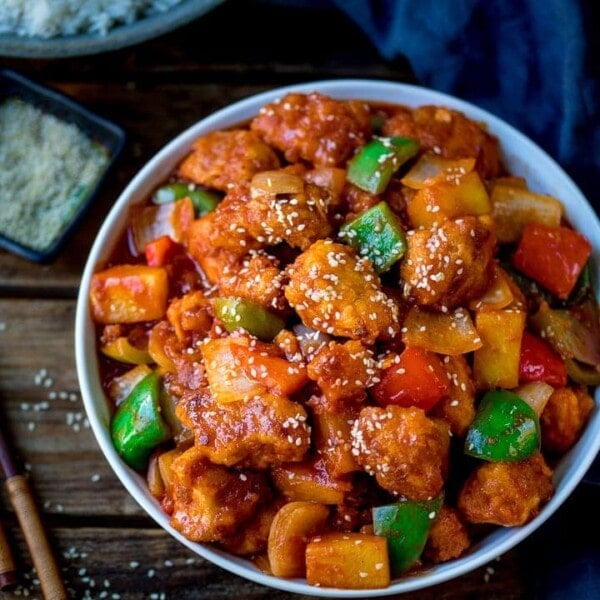
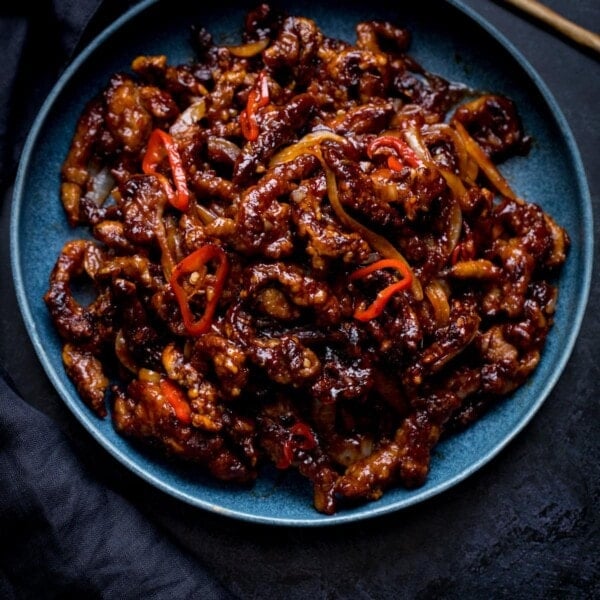
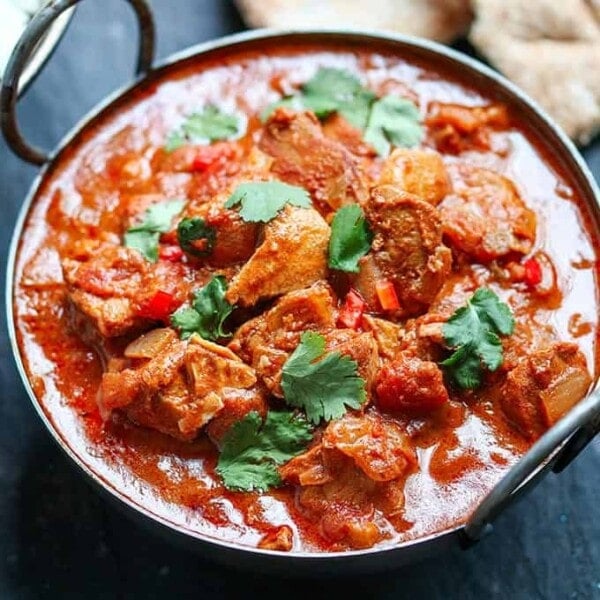
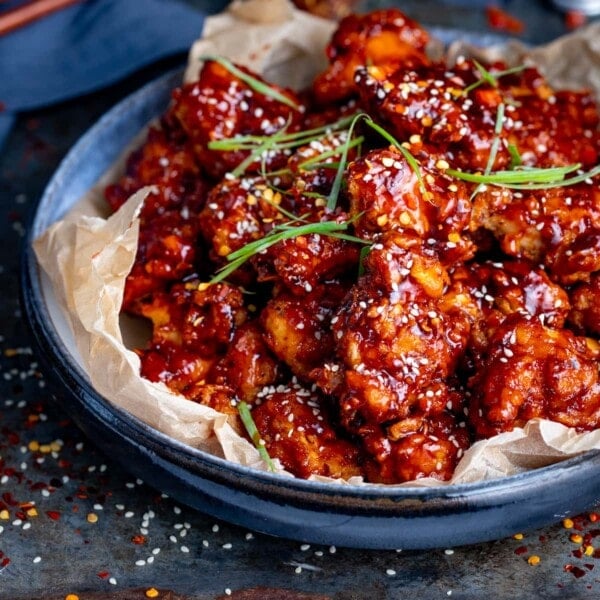







Amazing flavour, love this recipe and even the kids are asking for more. thank you
Can this be done in a slow cooker, can you advise of cooking time if so please? I’m looking at cooking for dinner tonight.
Hi Megan,
Cooking the recipe in the slow cooker will give you a nicely flavoured curry, BUT you won’t get the oil separating from the coconut milk, which means you won’t get the sauce reducing or the caramelization of the beef.
If you did want to use the slow cooker and you want that dry-caramelized finish, you can make up the curry right up to the part you add the beef back in with the coconut milk. Bring to the boil, then transfer to the slow cooker.
Cook on high for 4-5 hours or low for 6-8 hours. After this time, transfer to an ovenproof casserole pan and place in the oven, uncovered at 160C/320F for 1-1 1/2 hours, until the sauce reduces, the oil separates from the coconut milk and the beef caramelizes to a dark golden brown. Stir every 30 minutes during the time cooking in the oven.
Thanks
Chris & Nicky
Gorgeous recipe, thank you so much! Your instructions were perfect and everything I needed. It turned out so yummy, please keep going!!
Love this. Delicious! Would love to scale up to 12. can I just x2.5 everything?
Hi Sam, I believe this should work fine, but the cooking process may take longer due to the extra amount of liquid. A wider casserole dish (rather than a narrower deep dish), that would be useful as it would mean more of the hot air from the oven is in direct contact with the sauce.
Looks very tasty Nicky, I can’t wait to get the ingredient’s and try this one out as well as your butter chicken recipe…. thanks Paul 🤠
Haven’t used this yet but I will in the next few days. Just wanted to say this is a great site! Really clear explanations and much better than most click-baitey cooking sites – thanks and keep up the good work!
Love it!!! Reminded of my nan’s rendang !! Only difference she adds galangal x
Best Rendang ever. Have made it 3 times already. Highly recommend it.